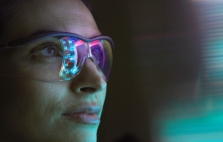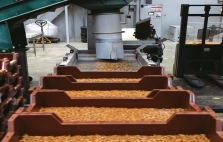The new resilience: Innovating from resources to customer


Welcome to the second issue of Prism 2022!
The global economic climate has changed almost beyond recognition over the last few years, thanks to an increasingly toxic combination of populism, the pandemic, war and the continuing existential threat of climate change. Globalization, which once seemed unstoppable, has been stalling and, in some areas, going into sharp reverse. For businesses, the focus of top management attention has shifted significantly towards securing resources and supplies.
In this climate, achieving business resilience has taken on a new importance. While only a few years ago, resilience was usually centered on how to manage operational risks and respond effectively to crises, today it’s also about innovation – innovation along the entire value chain, from resources to customers, to find new ways of doing business that provide the sort of agility needed in a world where disruption is the norm. This is our theme for the current issue of Prism.
Our first three articles focus on different examples of innovation in managing resources. In our first article, we look at the endemic and increasingly critical problem of shortage of digital skills and capabilities. For years, outsourcing and offshoring have been the immediate response, but we make a case for a different, more strategic approach to address this core issue for today’s businesses. Our second article examines the complex supply chains underpinning the creation of electric vehicle (EV) batteries. As battery materials become harder to secure, taking a holistic, end-to-end value chain view is more important than ever. Sticking with the theme of alternatives, our third piece looks at the rise of bio-based materials, and why a mix of consumer pull and technology push means their time may finally have come.
Many traditional players in established industries face growing challenges from start-ups and new, digital-savvy competitors – none more so than banks. Many have written off the chances of the large incumbents surviving in a fintech world, but we explain why there’s still time for traditional players to strike back, providing they transform themselves rapidly.
Innovation is central to becoming more resilient, yet many large organizations are still struggling to replicate best practices across their different business units. Based on the latest research, our fifth piece explains the root causes of this innovation gap and proposes a range of solutions to bridge it.
Next, for something refreshingly different, we look at the potential for creative thinking to drive business innovation. Often misunderstood and neglected by senior managers, our last article busts common myths and shows how using some simple but powerful tactics can boost creative thinking in senior management.
Finally, we are delighted to bring you an exclusive interview with Antoine Hubert, the CEO of Ynsect, set to become one of the global leaders in the emerging insect-based food industry. Antoine shares some fascinating insights into his company and the opportunities for the future in this important area for biodiversity and sustainability.
We hope you enjoy the issue!
Rick Eagar
Chief Editor, Prism
Arthur D. Little
DATE

Welcome to the second issue of Prism 2022!
The global economic climate has changed almost beyond recognition over the last few years, thanks to an increasingly toxic combination of populism, the pandemic, war and the continuing existential threat of climate change. Globalization, which once seemed unstoppable, has been stalling and, in some areas, going into sharp reverse. For businesses, the focus of top management attention has shifted significantly towards securing resources and supplies.
In this climate, achieving business resilience has taken on a new importance. While only a few years ago, resilience was usually centered on how to manage operational risks and respond effectively to crises, today it’s also about innovation – innovation along the entire value chain, from resources to customers, to find new ways of doing business that provide the sort of agility needed in a world where disruption is the norm. This is our theme for the current issue of Prism.
Our first three articles focus on different examples of innovation in managing resources. In our first article, we look at the endemic and increasingly critical problem of shortage of digital skills and capabilities. For years, outsourcing and offshoring have been the immediate response, but we make a case for a different, more strategic approach to address this core issue for today’s businesses. Our second article examines the complex supply chains underpinning the creation of electric vehicle (EV) batteries. As battery materials become harder to secure, taking a holistic, end-to-end value chain view is more important than ever. Sticking with the theme of alternatives, our third piece looks at the rise of bio-based materials, and why a mix of consumer pull and technology push means their time may finally have come.
Many traditional players in established industries face growing challenges from start-ups and new, digital-savvy competitors – none more so than banks. Many have written off the chances of the large incumbents surviving in a fintech world, but we explain why there’s still time for traditional players to strike back, providing they transform themselves rapidly.
Innovation is central to becoming more resilient, yet many large organizations are still struggling to replicate best practices across their different business units. Based on the latest research, our fifth piece explains the root causes of this innovation gap and proposes a range of solutions to bridge it.
Next, for something refreshingly different, we look at the potential for creative thinking to drive business innovation. Often misunderstood and neglected by senior managers, our last article busts common myths and shows how using some simple but powerful tactics can boost creative thinking in senior management.
Finally, we are delighted to bring you an exclusive interview with Antoine Hubert, the CEO of Ynsect, set to become one of the global leaders in the emerging insect-based food industry. Antoine shares some fascinating insights into his company and the opportunities for the future in this important area for biodiversity and sustainability.
We hope you enjoy the issue!
Rick Eagar
Chief Editor, Prism
Arthur D. Little
TABLE OF CONTENTS

Winning the war for digital talent
Businesses across the world are facing a shortage of professional talent and expertise in digital and IT skills and capabilities. For example, a 2021 survey suggested that 76 percent of IT decision-makers worldwide faced critical skills gaps in their departments, an increase of 145 percent since 2016.[1]

Achieving resilience and sustainability for the EV battery supply chain
However, battery supply chains remain complex, global, and fragile, with many still evolving from scratch. Their resilience is impacted by a growing number of factors, from rising raw material costs to geopolitical disruption. Average battery pack prices have risen in 2022, the first increase since 2013. Environmental, social, and governance (ESG) concerns, greater regulation, and governments’ desire to localize battery production add to pressure on already-stretched global supply chains. All of these factors lead to potential bottlenecks that affect production.

Why the bio-based materials market is finally poised for growth
This is now changing rapidly, reinvigorating the market. Demand is growing, driven by increasingly environmentally conscious consumers and governments’ Net Zero targets requiring consumer-focused product companies to achieve sustainability. Finally, technology breakthroughs are bringing down production costs for bio-based materials, while improving their performance to make them comparable or superior to fossil-based counterparts.

Disruption — Can banks strike back?
So said John Reed, the former Chairman and CEO of Citigroup, as far back as 2015, at a time when global banks across the world were starting to pare back their international operations in response to increasing regulation. The decline of the traditional global bank has only accelerated since then. The newly emerged digital native and “neobank” competitors are now in favor. Their state-of-the-art digital technology, lower-cost structure, lower capital requirements, and greater flexibility in introducing products render them nimbler and more adaptable to changing consumer demands.

Closing the innovation gaps between business units
Why is this, and what can companies do to improve the situation? Based on new research, this article explores the reasons for failure to share best innovation practices between business units and sets out strategic approach companies can take. About the research Having run for over 20 years, ADL’s Global Innovation Excellence Benchmark is an anonymous self-assessment best practice database, containing responses from over 500 companies to a series of detailed questions on innovation excellence. It measures two dimensions:

Creative thinking for leaders
There is still a fashionable prejudice that large corporations don’t know how to do rapid radical innovation, and that start-ups are now taking the place of the research and innovation departments within big firms because the “liner is too big to turn”. This is misguided. As we saw during the COVID-19 crisis, some large companies can deliver incredible innovations very quickly. Existing products were rapidly hacked to fight the virus. For example, sporting goods retailer Decathlon transformed its diving mask into a respirator.

How insects can help reinvent the food chain
Ÿnsect is a rapidly growing agri-food company based in France, set to become one of the global leaders in transforming insects into high-performance natural ingredients for pets, fish, plants, and human beings. Antoine co-founded the company in 2011. In this interview with Arnaud Jouron, Partner at Arthur D. Little, Antoine shares some fascinating insights into the company and the exciting opportunities for the future in the insect-based food industry.
